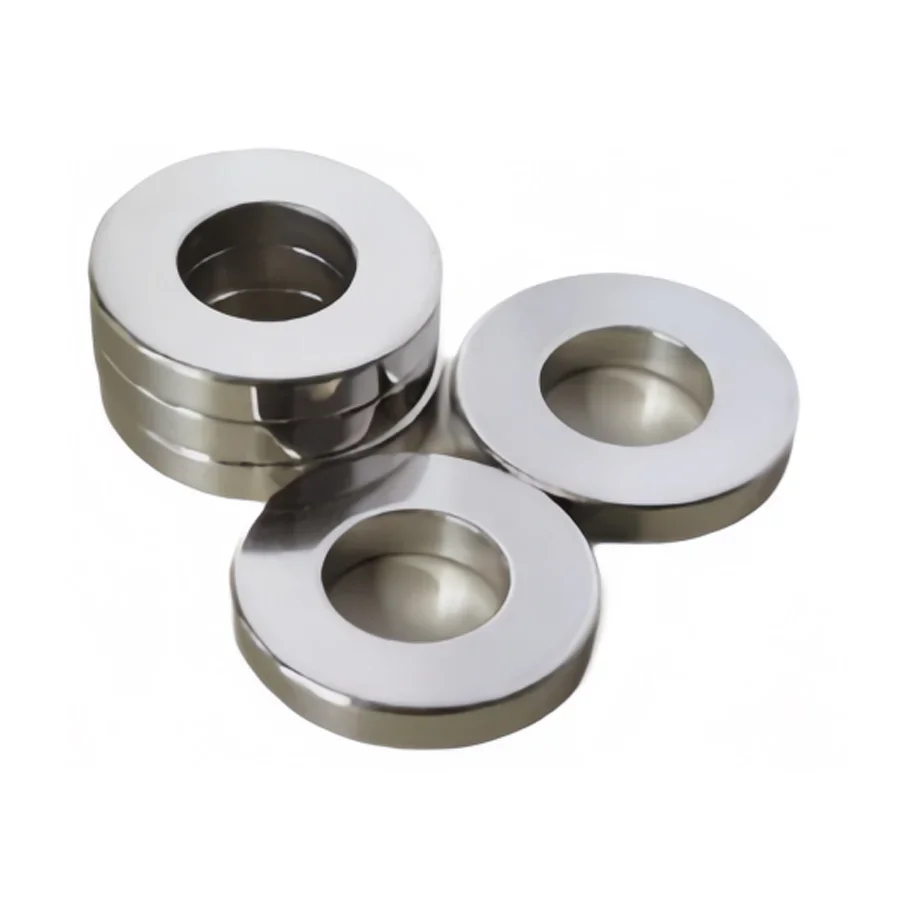Production process of customized sintered NdFeB ring shaped magnet
Sintered NdFeB (Neodymium Iron Boron) magnets are widely used in various industries due to their exceptional magnetic properties. Among the different shapes available, ring shaped magnets are particularly popular for their versatility and applications in motors, generators, and magnetic couplings. In this blog post, Zhonghang will share the production process of customized sintered NdFeB ring shaped magnets, exploring the key steps involved and the factors that influence their quality and performance.
1. Raw Material Selection
The production process of sintered NdFeB ring shaped magnets begins with the careful selection of high-quality raw materials. Neodymium, iron, and boron are the primary elements used, along with small amounts of other elements to enhance the magnet's properties. The purity and composition of these materials play a crucial role in determining the final magnet's performance.
2. Powder Production
The next step involves the production of fine magnetic powder through a process called the hydrogen decrepitation (HD) process. This process involves crushing the raw materials into small particles and then exposing them to hydrogen gas at high temperatures. The hydrogen reacts with the material, causing it to break down into fine powder. The resulting powder is then sieved to obtain particles of the desired size range.
3. Magnetic Alignment
To enhance the magnetic properties of the powder, a magnetic field alignment process is employed. The powder is placed in a die and subjected to a strong magnetic field while being compacted. This aligns the magnetic domains within the powder particles, resulting in a more uniform and stronger magnetic field.

4. Compaction and Shaping
The aligned powder is then compacted into the desired shape using a hydraulic press. In the case of ring shaped magnets, a ring-shaped die is used. The compacted powder is known as a green magnet, which is fragile and requires careful handling.
5. Sintering
Sintering is a critical step in the production process, where the green magnet is heated in a controlled atmosphere furnace. The temperature and duration of the sintering process are carefully controlled to allow the particles to bond together, forming a solid magnet. During sintering, the magnet undergoes a significant reduction in size, known as shrinkage, due to the rearrangement of particles and the elimination of voids.
6. Machining and Surface Treatment
After sintering, the magnet undergoes machining processes to achieve the desired dimensions and surface finish. Precision cutting techniques such as grinding, lapping, and slicing are employed to achieve tight tolerances. Additionally, surface treatments like coating or plating may be applied to protect the magnet from corrosion and improve its durability.
7. Quality Control and Testing
To ensure the magnets meet the required specifications, rigorous quality control measures are implemented. Various tests, including magnetic property testing, dimensional inspection, and surface analysis, are conducted to verify the magnet's performance and quality. Any magnets that do not meet the specified criteria are rejected or reworked.
Conclusion
The production process of sintered NdFeB ring shaped magnets involves several intricate steps, each crucial in determining the final magnet's quality and performance. From raw material selection to sintering and surface treatment, every stage requires precision and expertise. Understanding this process helps us appreciate the complexity involved in manufacturing these powerful magnets. As technology advances, the production process continues to evolve, leading to improved magnet performance and expanding their applications across various industries.
https://www.zhsdmagnet.com/Production-process-of-customized-sintered-NdFeB-ring-shaped-magnet.html
Zhonghang
nishant@sunny-magnet.com
